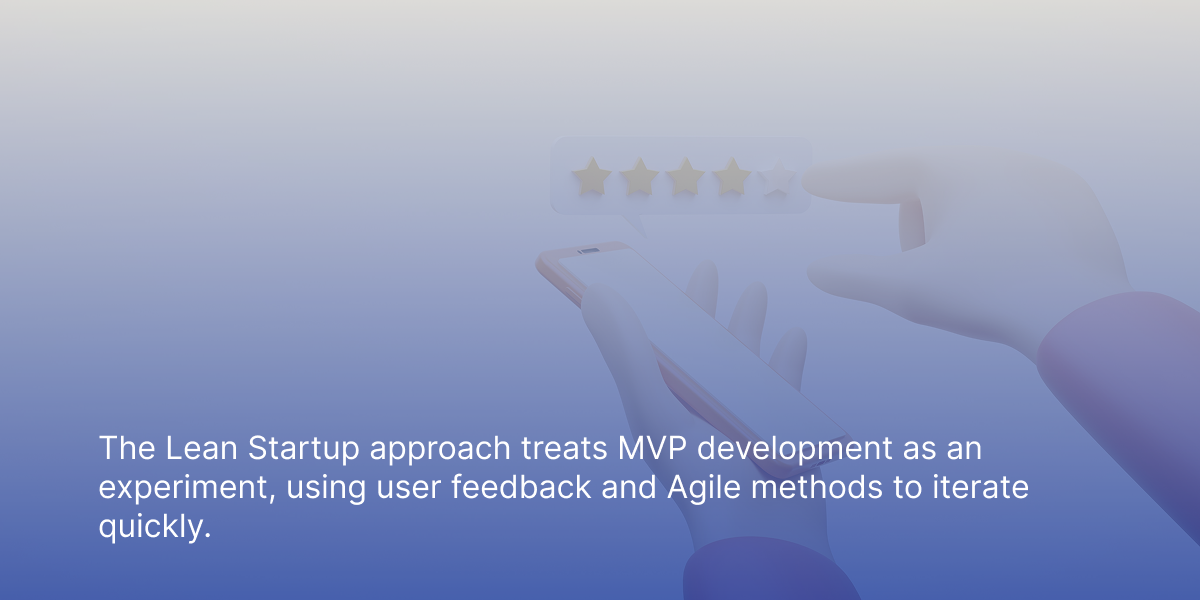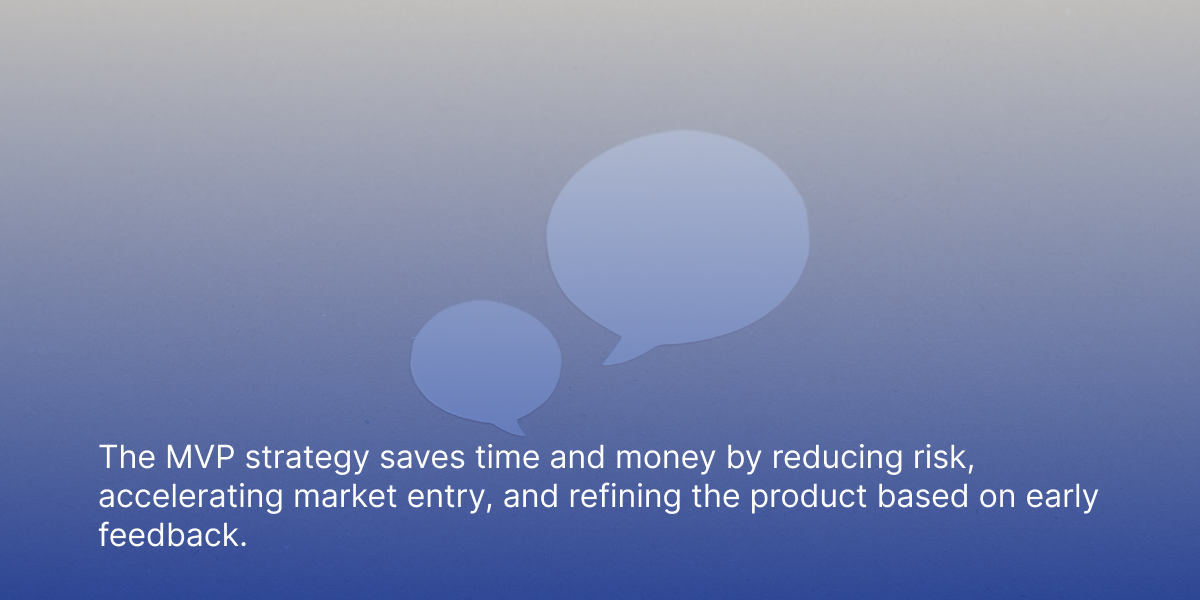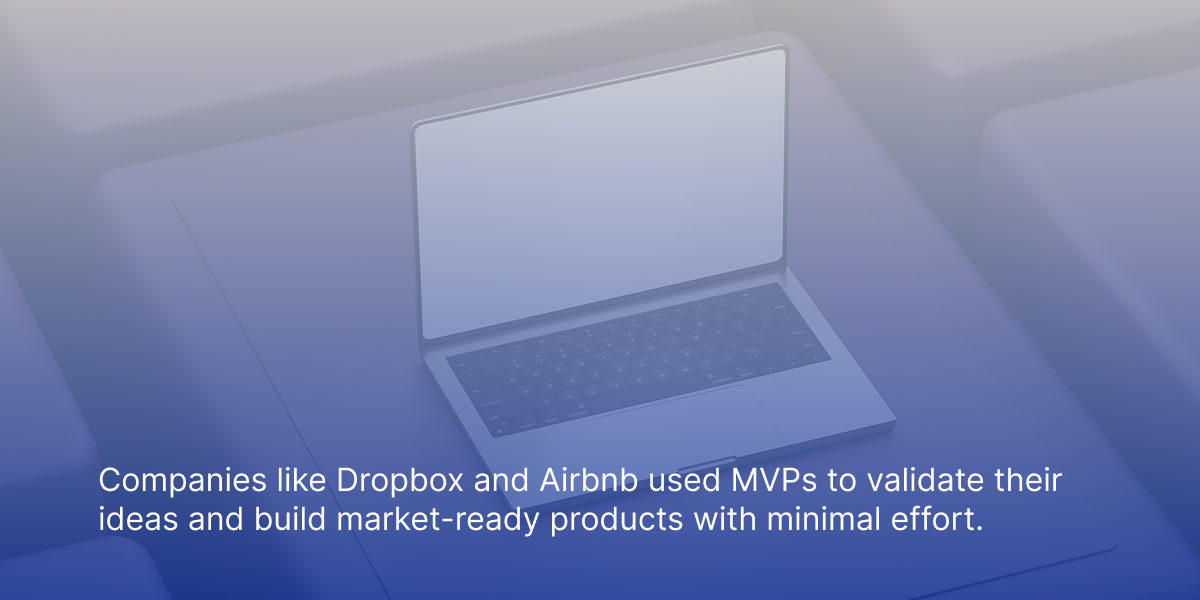An MVP, or Minimum Viable Product, represents the most basic version of a product that can be released. Eric Ries, the originator of the MVP concept, emphasizes that it is the simplest version of a product designed to gather validated customer feedback efficiently. It lets businesses test their concepts with minimal investment. Why is an MVP crucial in product development? It allows firms to gain insights from real users quickly, validate ideas, and make data-driven decisions. This article will cover everything you need to know about MVP in product development, from its core principles to real-world examples.
Key Takeaways
- The MVP approach enables businesses to test product ideas quickly and efficiently, focusing on essential features to validate market demands and user needs.
- Collaboration among cross-functional teams is vital for defining an MVP, as it helps ensure alignment with customer pain points and competitive differentiation.
- Effective feedback mechanisms, including continuous feedback, and iterative development are crucial for refining MVPs, allowing companies to enhance user satisfaction and adapt to market changes.
- Tracking conversion rates as a key performance indicator (KPI) is essential for measuring the effectiveness and viability of an MVP. Conversion rates, along with metrics like user engagement and customer satisfaction, provide valuable insights into user behavior and the overall success of an e-commerce application.
Understanding the Minimum Viable Product (MVP)
The concept of a Minimum Viable Product (MVP) refers to the simplest version of a product that still delivers enough value for testing purposes. By employing an MVP, organizations can gain valuable insights and refine their offerings before making substantial investments. The principal objective of an MVP is to swiftly and effectively test and affirm ideas, ensuring the final product resolves real customer issues and fulfills market requirements.
By launching an MVP, teams are able to collect feedback from users, confirm their assumptions, and deepen their understanding of the marketplace. Testing out the viability of a new offering in this manner with minimal expenditure enables companies to make knowledgeable decisions about expansion while identifying any concerns at an early stage. Gathering valuable feedback from early adopters is crucial as it informs future development and improves the overall product based on user preferences. This repetitive procedure is vital for perfecting the end-product so it caters precisely to consumer demands.
Creating an MVP necessitates collaboration among various professionals across multiple disciplines.
- Product Managers
- Designers
- Developers
- Stakeholders
This collaborative process guarantees attention is paid not just to what customers need but also how services differ from competitors’.
Utilizing minimum viable product strategies empowers firms when navigating through complex aspects associated with developing products by enhancing both agility and accuracy throughout these processes.
The Core Principles of MVP Development
The essence of successful MVP development is centered on emphasizing the fundamental features that resolve crucial user issues. By concentrating on these essential features, a product team can define its central value proposition and provide substantial value while avoiding superfluous intricacies. Adding too many features to an MVP may result in delayed deployment and escalated expenses, undermining the rationale behind adopting an mvp approach.
Embracing the MVP methodology involves actively soliciting user feedback and refining based on what users say. This cyclical development process guarantees that the product remains in tune with both user preferences and market trends. Tailoring feature development according to customer reactions not only improves their experience but also leads to a more polished end-product.
Read more in our previous article:
MVP for Startup – A Step-by-Step Guide to Building Smart in 2025
Choosing the Right MVP Approach
Selecting an appropriate MVP (Minimum Viable Product) approach is essential for the successful progression of your product idea. There are diverse forms of MVPs designed to meet varying aims and purposes. Take, for instance, the concierge MVP, which necessitates manual operation of every aspect of a service in order to procure direct feedback from customers—this method yields a profound understanding of what customers desire and require.
It is important to get an MVP to market quickly to balance short-term and long-term goals, ensuring immediate delivery while aligning with sustainable objectives.
The Wizard of Oz MVP is another fascinating strategy where there’s an illusion that a fully operational product exists when in reality human effort drives its functionality behind the scenes. Deploying a landing page can be an effective tactic. It permits you to present your concept and potentially secure revenue by evaluating customer interest.
Adopting an incompatible development process may result in squandering resources and unsuccessful MVPS. It is crucial to ensure that the chosen approach aligns with your specific objectives to prevent such outcomes. After the MVP, the next step is developing a Minimum Marketable Product (MMP), which is the simplest version of a product that can be marketed and accepted by consumers, focusing on readiness for early adopters and proven value through testing.
Crafting a Lean Startup Strategy for MVPs
The Lean Startup methodology serves as an influential approach for creating Minimum Viable Products (MVPs). It advocates that the product development journey should act as a methodical experiment designed to generate answers regarding the market’s demand and the project’s feasibility. By implementing this rigorous process, startups can navigate through risks and uncertainties with better control.
To effectively track progress during MVP development, utilizing project management applications such as Asana or Trello is beneficial. For enhancing agility in this process, tools like Jira and Scrum are essential since they support Agile methodologies pivotal to facilitating MVP creation.
Incorporating user input is crucial in the Lean Startup methodology, as it allows for rapid iterations and better alignment between the product and user preferences.
By adopting a lean and agile perspective in developing an MVP, startups can adapt more quickly to what their target market requires. It is imperative for achieving success in MVP development that there is a focus on setting overarching objectives while also fostering strong communication channels among team members.
Upgrading the software development process, including implementing CI/CD pipelines, is essential for efficiently scaling an MVP and maintaining code quality in a rapidly evolving development environment.
Essential Steps in MVP Development
Developing a successful MVP hinges on crafting a meticulous strategy that facilitates its effective rollout. The key stages in creating an MVP involve pinpointing the issues faced by customers, incorporating just enough features to address these problems adequately, and then soliciting vital feedback which can be instrumental for refinement. It is crucial to gather feedback continuously throughout the MVP development process, using methods such as surveys and user interviews to collect insights from early adopters.
These steps are foundational to devising a product strategy aimed at fulfilling user requirements and enhancing the prospects of success within the marketplace while taking into account multiple factors. The MVP should be designed to achieve significant insights about customers with the least effort, ensuring that the simplest functional version of the product is developed to facilitate efficient collection of validated learning while minimizing resources spent.
Identifying Customer Pain Points
Identifying the specific issues customers face is an essential aspect of developing a Minimum Viable Product (MVP), as it guarantees that the product caters to genuine market requirements. Establishing direct contact with prospective users can greatly improve comprehension of their difficulties. By involving users from the outset, one can circumvent the common mistake of designing a product that does not align with their actual necessities.
Proceeding to MVP development without first validating its demand in the market could result in squandering resources and creating products nobody wants. It’s crucial to define user personas based on real-world users to ensure your product appeals directly to those you intend it for.
By grasping customer needs through their stories, developers are able to sculpt a product that delivers substantive value, thereby elevating overall customer satisfaction. User stories play a crucial role in understanding customer pain points, as they provide concise backlog items that facilitate a smooth and efficient flow of product ideas through the continuous delivery (CD) pipeline.
Read more in our previous article:
MVP Development Company That Builds Smart, Scalable Products from Day One
Building Just Enough Features
In the realm of MVP development, the axiom of incorporating just enough features is pivotal. The essence lies in formulating a succinct and clear concept that can be readily communicated to potential customers. By adopting the Single-Feature MVP approach, developers are able to refine one essential function thoroughly. This enables a swift debut into the market while minimizing costs and guaranteeing an effective feature set. Visualizing all the features required for a product is crucial to ensure alignment across team members and effective task management.
Centering on product features that resonate with users ensures that significant value is delivered through minimal effort without introducing undue complexity into the mix. When all prospective features are meticulously prioritized based on user requirements, it leads to crafting a solution that addresses genuine concerns effectively—thereby drawing in early adopters. Over time, as more individuals become part of its clientele, there’s room for integrating advanced features along with new functionalities and additional elements to enhance and expand upon this foundational feature palette further. Additionally, addressing other features like customer support and cybersecurity is essential to maintain user satisfaction and build a solid foundation for future development.
Gathering Valuable Feedback
Collecting valuable feedback is essential for fine-tuning the Minimum Viable Product (MVP) to align with user needs. The concept of validated learning plays a pivotal role in Lean Startup methodology, emphasizing the importance of comprehending actual customer desires over simply quantifying production metrics. Engaging with enthusiastic early adopters often results in more meaningful and useful feedback compared to input from a broader but less invested group.
Tools like Jira enable teams to capture insights and provide feedback on features as they are built, ensuring continuous development and alignment within the team.
Employing a variety of mechanisms for gathering feedback after launch can greatly improve both the quality and pertinence of insights gained from users. Maintaining an ongoing dialogue with customers enables teams not only to gather but also respond effectively to user feedback, fostering increased customer satisfaction and ensuring that adjustments made enhance market alignment.
Value Proposition in MVP Development
The value proposition is a cornerstone of Minimum Viable Product (MVP) development, defining the unique benefits and value that a product offers to its customers. A well-crafted value proposition not only differentiates a product from its competitors but also resonates deeply with the target audience, significantly increasing the chances of success.
In the context of MVP development, the value proposition should be laser-focused on the core features and essential features that address the key pain points of the target users. The Lean Startup methodology emphasizes the importance of gathering user feedback and iterating based on that feedback to refine the value proposition continually. This approach ensures that the product evolves in alignment with actual customer needs and preferences.
A minimum viable product (MVP) approach allows companies to test and validate their value proposition with real users, reducing the risk of investing in a product that may not meet customer needs. The value proposition should be communicated clearly and concisely through the user interface, marketing materials, and overall customer experience. This clarity helps in setting the right expectations and attracting the right user base.
Product managers play a critical role in defining and refining the value proposition, ensuring that it aligns with the product development strategy and customer feedback. Continuous development and iteration are essential to ensure that the value proposition remains relevant and effective in meeting customer needs. The Net Promoter Score (NPS) is a valuable metric for measuring customer satisfaction and loyalty, providing insights into the effectiveness of the value proposition.
By focusing on the value proposition and gathering feedback from customers, companies can create a successful MVP that meets customer needs and drives business growth. This approach not only enhances customer satisfaction but also positions the product for long-term success in the market.
The Role of Product Managers in MVP Strategy
Product managers play a vital role in developing and executing the Minimum Viable Product (MVP) strategy, ensuring that it aligns with the company’s overall product development strategy and goals. They are responsible for defining the product vision, roadmap, and requirements, as well as prioritizing feature development based on customer feedback and market research.
The Lean Startup methodology emphasizes the importance of continuous iteration and refinement, and product managers must be able to adapt and pivot the MVP strategy based on user feedback and market conditions. This requires a deep understanding of the market and the ability to make data-driven decisions that align with the overall product strategy.
Product managers must work closely with cross-functional teams, including engineering, design, and marketing, to ensure that the MVP is developed and launched successfully. Their role involves gathering and analyzing customer feedback, identifying patterns and trends, and making informed decisions to guide the MVP strategy.
Balancing the needs of different stakeholders, including customers, business leaders, and team members, is a critical aspect of the product manager’s role. They must ensure that the MVP meets customer needs and drives business growth while maintaining alignment with the company’s strategic objectives.
The MVP approach requires product managers to be agile and flexible, willing to take risks and experiment with new ideas and approaches. Effective communication of the value proposition and MVP strategy to stakeholders, including customers, investors, and team members, is essential for gaining support and ensuring successful execution.
Continuous monitoring and evaluation of the MVP’s performance are crucial for making adjustments and refinements as needed. This ensures that the product remains competitive and continues to meet customer needs. By leveraging the MVP approach and working closely with cross-functional teams, product managers can create successful products that drive business growth and meet customer needs.
Benefits of the MVP Approach in Product Development
The MVP approach allows companies to test product ideas quickly and efficiently with minimal investment. Utilizing the MVP method saves costs, reduces time to market, and increases chances of success. Focusing on iterative improvements in MVP leads to faster market entry and cost savings.
The MVP strategy helps companies mitigate risks associated with product development, allowing for pivots or adjustments without significant losses. Gathering valuable feedback from early adopters enables companies to refine their products effectively, leading to improved customer satisfaction. Protecting market share during MVP development is crucial, as neglecting areas like security and privacy can threaten previously acquired market share.
Many successful products and services in the market started off as MVPs, proving the effectiveness of this approach. Many startups begin their journey by selecting a single north star metric during their early growth phase, enabling them to concentrate their development efforts on achieving specific goals.
Common Pitfalls and How to Avoid Them
During MVP development, it’s common for creators to over-engineer the product or not gather enough feedback from users. Overlooking the importance of feature prioritization can complicate the development process. To avoid such complexities in your MVP, concentrate solely on incorporating essential features and omit any superfluous elements. Disregarding input from users throughout the creation of an MVP may result in a final product that fails to address real-world problems. Additionally, considering several factors such as cost, implementation time, and the corresponding action plan is crucial to ensure the MVP aligns with business goals and operates smoothly within existing systems.
Hastening through the development of an MVP might overlook crucial quality assurance measures, which could introduce bugs, performance issues, or expose security weaknesses. Inadequate project management also has potential consequences such as delayed timelines and escalating costs associated with developing an MVP. By acknowledging and addressing these frequent stumbling blocks head-on, you enhance both the efficacy of your development workflow and increase your chances for a triumphant product release based on user feedback and key features integration. Incorporating extra features as the product evolves through testing and refinement can also make the MVP more marketable and appealing to users.
Scaling Your MVP: Best Practices
Metrics indicating the success of a Minimum Viable Product (MVP) encompass user involvement, rates at which browsers become customers, and the contentment levels of those customers. It is crucial to establish explicit objectives for your MVP in order to assess its impact and feasibility effectively. As you expand your product, make sure that feature development is prioritized according to their significance for users. Prioritizing feature development based on user needs ensures that your efforts align with what is most crucial for your audience.
Assembling an adept team plays a critical role in upholding quality as the product grows larger. Embracing automation and cutting-edge technologies can significantly boost operational efficiency during expansion phases. A robust strategy for marketing combined with a commanding online presence are pivotal elements in attracting more customers and optimizing income generation. Balancing new features with technical debt management is essential to maintain a sustainable and scalable product evolution.
Real-World Examples of Successful MVPs
Firms such as Dropbox and Airbnb underscore the importance of employing Minimum Viable Products (MVPs) to effectively gauge market interest and launch into the market swiftly. Dropbox utilized a video demonstration of their service to entice users and collect feedback in advance of an official release. In parallel, Airbnb’s inception revolved around a basic website that provided rentals for air mattresses during a large-scale convention as a means to evaluate the potential demand.
Additional illustrations of prosperous MVPs include Groupon’s rudimentary WordPress site which distributed local offers via email to its subscribers, alongside Etsy’s uncomplicated multi-seller platform tailored for artisanal products. Twitter began its journey as an internal messaging system based on text messages prior to expanding towards larger user groups.
The above cases illuminate how adopting an MVP strategy can be instrumental in validating ideas for new products while steering them toward successful outcomes within their respective markets. Successful MVPs gather the maximum amount of validated learning about customers with minimal effort.
Continuous Development and Iteration
At the heart of Lean Startup methodologies is the build-measure-learn feedback loop, which empowers teams to adjust their products swiftly in response to customer insights. The importance of user testing and input is critical for enhancing the product during its growth phase. Teams can gather this invaluable feedback through a multitude of avenues including surveys, interviews with users, and employing analytics tools.
Adding more features based on user feedback is essential to enhance user experience and address customer needs effectively.
The process of iterative development enables teams to incrementally polish their product while focusing on heightened quality and elevating user satisfaction. Adopting an Agile approach to MVP (Minimum Viable Product) development ensures adaptability and continual deployment of enhancements rooted in customer responses—essentially shaping advancements based on consumer critiques.
After launching an MVP, it’s crucial to conduct post-release analysis by amassing data from various streams. This analysis aids in pinpointing both strong points and areas for improvement within the MVP’s performance—an essential component that feeds into ongoing enhancement informed by extensive market research. Final thoughts developing in the context of ongoing iteration and scaling are vital to ensure the product evolves effectively, balancing new features with stability and efficiency.
Summary
Mastering MVP development involves understanding the core principles, choosing the right approach, and following a structured process. By focusing on customer pain points, building just enough features, and gathering valuable feedback, businesses can create successful MVPs that meet market demands. It is crucial to avoid focusing solely on incremental changes to existing products, as this can hinder significant growth and innovation. Continuous development and iteration ensure ongoing improvement and user satisfaction. Embrace the MVP strategy to navigate the complexities of product development with agility and precision. Iterating based on customer feedback is essential for refining the product and achieving long-term success.










